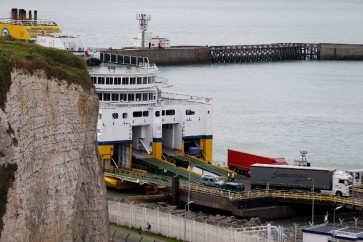Popular Reads
Top Results
Can't find what you're looking for?
View all search resultsPopular Reads
Top Results
Can't find what you're looking for?
View all search resultsIndonesia at risk of repeat 1997-1998 crisis: Reports
Due to the recent trend of capital outflow, Indonesia was particularly vulnerable to financial stress, economists have said
Change text size
Gift Premium Articles
to Anyone
D
ue to the recent trend of capital outflow, Indonesia was particularly vulnerable to financial stress, economists have said.
Asian countries are now 'closer than ever' to another 1997-1998 crisis. Whether history will repeat itself largely depends on policymakers' responses, according to a report by Singapore-based DBS Bank released on Thursday.
The report points to the recent capital outflow and slump in currencies and says that the region is 'absolutely' headed for the 1997-1998 financial downturn all over again.
Although most Asian countries have strong external positions ' which means that the region is still someway, at least five years, from an economic crisis similar to the 1990s ' two specific countries stand out as exceptions.
'India and Indonesia need to be monitored. External balances of both countries have trended south for the past 10 years,' DBS Bank economists, led by David Carbon, wrote in the report.
Carbon highlighted Indonesia's current account deficit, which has been posted for seven consecutive quarters since Oct. 2011, due to its large imports of fuel and capital goods.
In the second quarter this year, the current account deficit swelled to a historic high of US$9.8 billion, equivalent to 4.4 percent of gross domestic product (GDP), and Carbon suggested the government should pursue policy adjustments so that the deficit could be lowered at a more sustainable level of between 1.5 percent to 2.5 percent.
The current account deficit has been blamed for the weakness experienced by the rupiah: already under pressure due to the recent regional capital outflow.
Bank Indonesia (BI) hiked its key interest rate by a cumulative 125 basis points to 7 percent over the last three months to support the ailing currency, with economists predicting that the central bank, at its next board of governors' meeting on Sept. 12, will announce another interest rate hike.
However, higher interest rates also pose a risk to the banking industry, as they could squeeze banking liquidity and hurt mid-sized banks, as well as increase the bad-debt level.
Indonesia fell victim to the 1997-1998 crisis due to the vicious combination of a weak rupiah and high, bad debts, with the plunging currency at that time weighing heavily on private corporations with a sizeable amount of US dollar-based loans.
Indonesia's financial vulnerability was 'moderately high' and the country needed to be watchful of multiplying risk in its banking sector, Bank of America Merrill Lynch wrote in its report on the possibility of a repeat Asian 1997-1998 financial crisis.
'Indonesia has had a moderate lending boomlet, and the bad debt cycle is likely next,' the US-based bank warned.










